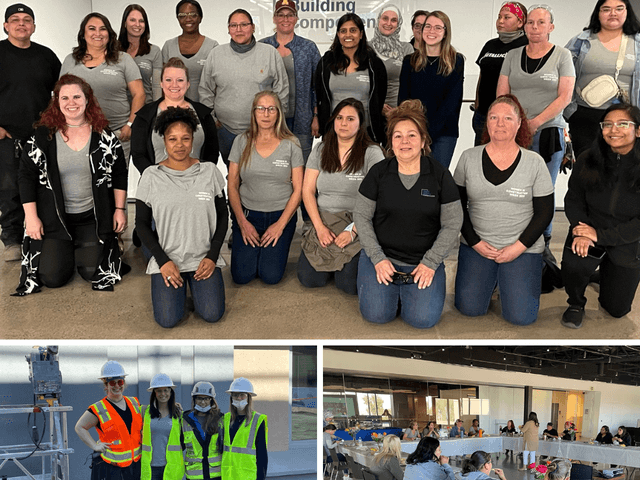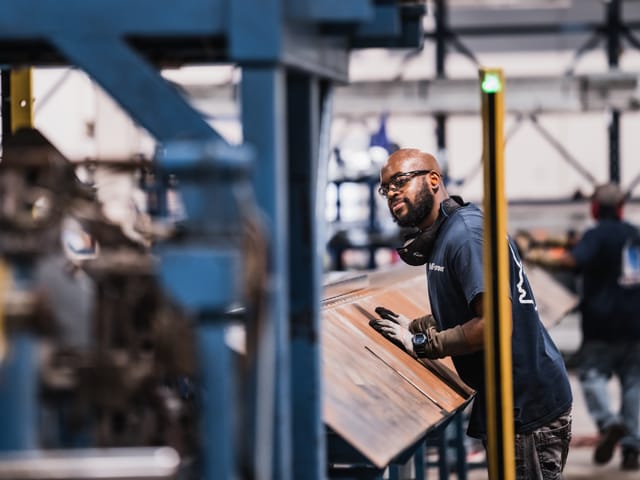
Celebrating Women in Construction Week 2022 – (read more)
Digital Building Components is proud to celebrate Women in Construction Week from March 6-12!

From senior living communities to student dormitories and everything in between, commercial and multifamily housing developers understand the important role speed-to-market can play in a project’s success. Delays from weather, material availability and skilled labor shortages can lead to cost overruns and create a negative public perception of the project before it even opens. To ensure faster build times, it’s no surprise developers are turning to the off-site, prefab model to enable concurrent construction. But what many don’t realize is how much the technology behind the modular manufacturing process drives speed.
In the first installment of our “Technology in Construction” blog series, we’ll explore how Digital Building Components’ (DBC) lean manufacturing process made possible by state-of-the-art technology brings unmatched efficiency in the new age of construction. We’ll start by taking a closer look at the advantages of speed-to-market with the assistance of digital fabrication.
To maximize efficiency, Digital Building Components builds digitally, direct from the model. Using the Design for Manufacture and Assembly (DfMA) methodology, or application of factory conditions to construction projects, data from virtual models feeds automatic and robotic machines, creating precise-to-spec products. For example, Digital Building’s CNC roll former machine can produce multiple profiles of studs and tracks and operates about ten times faster than the current industry standard. Nothing is generic. In fact, everything that comes off the machine is for a dedicated project with engraved “kit instructions.” What’s more, the machines are computer controlled and adjust automatically, reducing the margin for human error and rework. Because everything is rolled specific to a panel and batched, there is less waste – in both time and materials – and therefore less cost for the customer.0
Automation not only results in higher productivity, but it also leads to high-quality products that fit and perform as expected in the field, supporting an efficient build process. A case in point is Digital Building’s ability to weld light gauge steel framing robotically. With three robotic welders, each operating at four times the capacity of any manual station, Digital Building’s welding system provides more design flexibility and further contributes to the lean manufacturing process that helps eliminate schedule compression at the end of a project. To break it down in simpler terms, welding components together means wall systems will have tighter tolerances. And with robotics and automation, speed and quality are never compromised for one another. Each weld path runs through a simulation and a line laser makes any necessary adjustments before welding. Components are built correctly and efficiently the first time, resulting in high-quality products that allow teams to quickly weather-in buildings.
While DBC is manufacturing precise-to-spec panels, the on-site building team can continue in parallel with field construction. Tandem work processes can further accelerate the overall project schedule and shave days off of the construction timeline. In the case of a recent student housing project in Northern California, the digital prefabrication of 398 floor panels and 2,172 wall panels in conjunction with adjacent on-site construction provided 60 days of scheduling relief.
Ready to take the leap to time and resource saving modular construction processes? Let’s connect www.digitalbuilding.com/contact.
Keep Reading

Digital Building Components is proud to celebrate Women in Construction Week from March 6-12!

At Digital Building Components, we roll our studs in-house using efficient, lean manufacturing methods. Our processes revolve around transforming virtual models into precise-to-spec building components that can change the way you build.

Happy National Manufacturing Day from all of us here at Digital Building Components! Today, we’re joining with companies and educational institutions across the nation to celebrate the manufacturing workforce and inspire a new generation of creators.